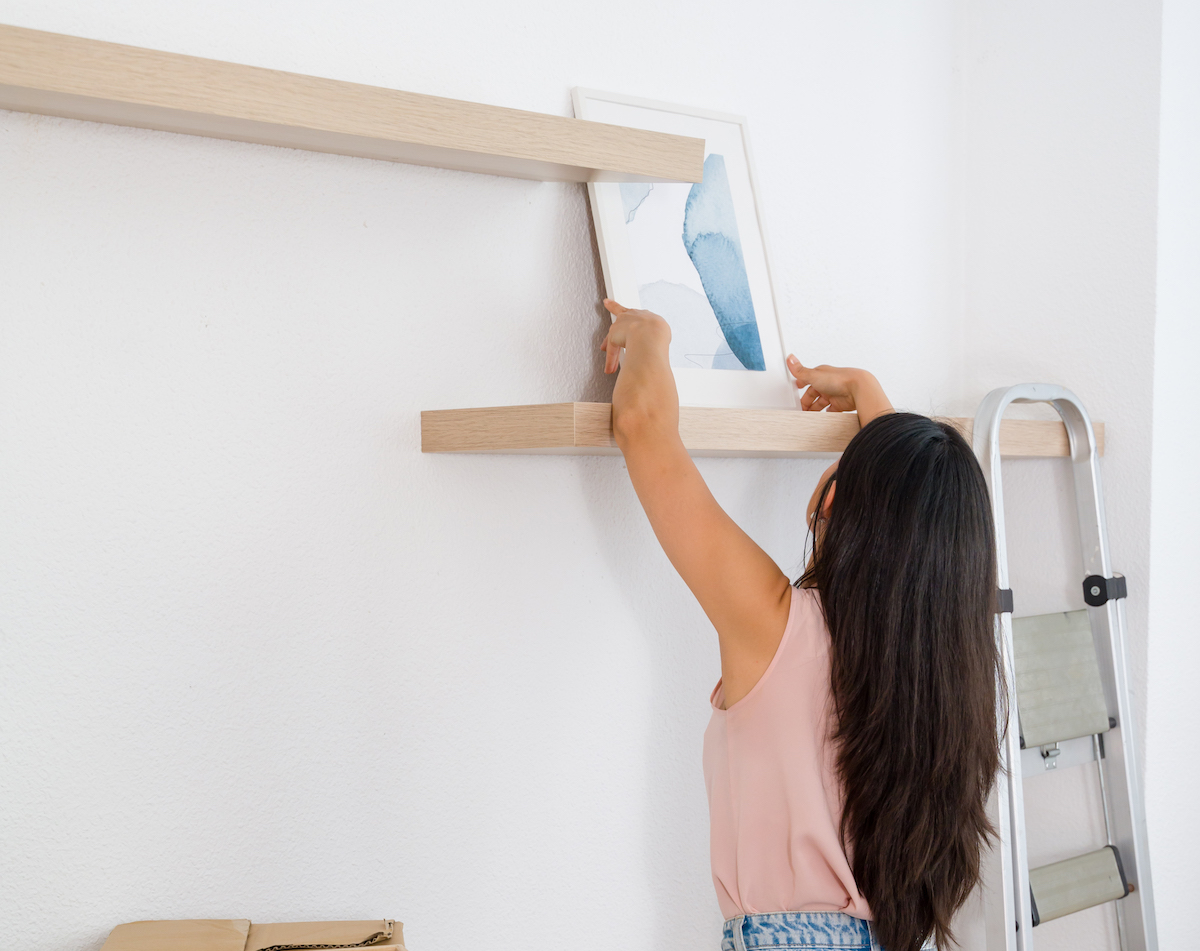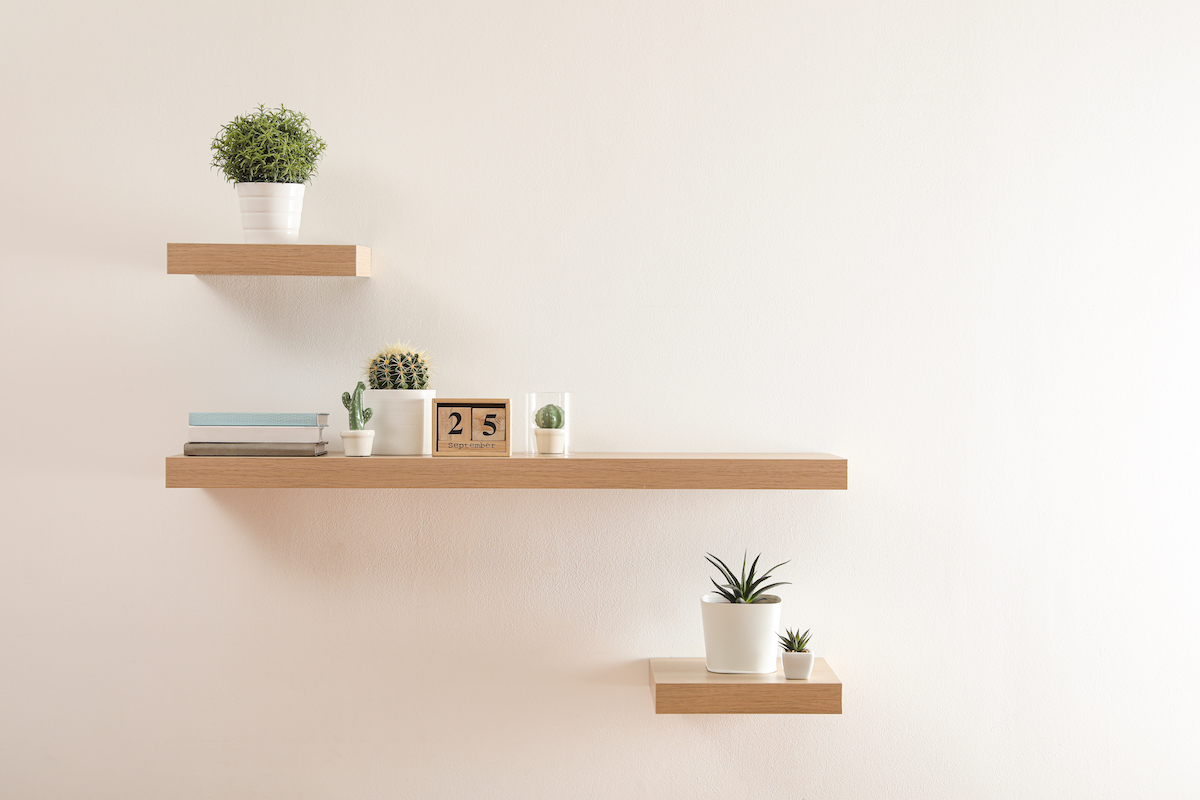We may earn revenue from the products available on this page and participate in affiliate programs. Learn More ›
Before hanging anything on your wall, it’s important to figure out what your wall is made of. Ideally, you should attach floating shelves (or anything else you’re hanging) to a wall stud, because it support the shelves’ weight best. A stud finder—a hand-held device that uses a magnet to detect metal, such as the nails and screws in the wall studs of your home—can help you locate these.
Installing Floating Shelves on Drywall or Plaster
What if you want to hang a shelf in a spot where there’s no stud? First, check to see if your wall is made of drywall or plaster by knocking lightly on the wall. If it sounds hollow, it’s drywall. Not hollow? Probably plaster. Another test is to see how readily a nail goes through the wall. If it slides right in, you’ve got drywall. If it takes a few more taps, then you’ve either got plaster or you have found a wall stud (tapping around the sides of the hard area will help you determine which). Once you know what type of wall you’re working with, you’ll have a better idea of the kind of hardware that is necessary for your project.

Tried-and-True Advice
“My secret to installing shelves, floating or otherwise? Invest in a stud finder. Fixing your shelves to studs helps you avoid having to mess around with wall anchors. And a stud finder helps you avoid having to knock blindly on the wall, hoping you’ve found the right spot to drive your screws.
I’ve never tried it, but I’ve heard you can even use your smartphone as a stud finder if it has a built-in magnetometer sensor, which many do.”
—Chase Brush, Contributing Writer
Installing Floating Shelves on Wall Studs
If you’re going to be attaching your floating shelf and bracket to a wall stud, you do not need any anchors. If you are working with plaster or drywall, however, the shelves will need extra support. Wall anchors, also called molly plugs, will help you build a sturdy foundation for your shelf. Regular hollow wall anchors are fine for plaster; for drywall you will need butterfly or toggle anchors. Before deciding which types of wall anchors to buy, consider what you want your shelves to hold. Anchors are rated for how much weight they can support; to be safe, it’s best to aim for the low end of an anchor’s maximum weight rating.
How to Install Floating Shelves

Tools & Materials
Bobvila.com may earn a commission from purchases made through these links.
Step 1: Measure and mark the spaces on the wall (on both ends) of where you want the shelf to go.
Step 2: Using a level, draw a line in pencil across the wall to ensure that your shelf will sit straight.
Step 3: Use the hand drill to drill pilot holes into the wall for the anchors.
Step 4: Insert hollow anchors into the holes, following the directions on the package.
Step 5: Align your bracket with the anchor-filled pilot holes. Using a regular screwdriver, attach the bracket to the wall by screwing into the anchors.
Step 6: Slide the shelf onto the bracket.

